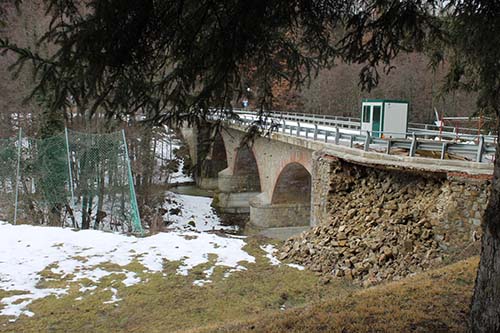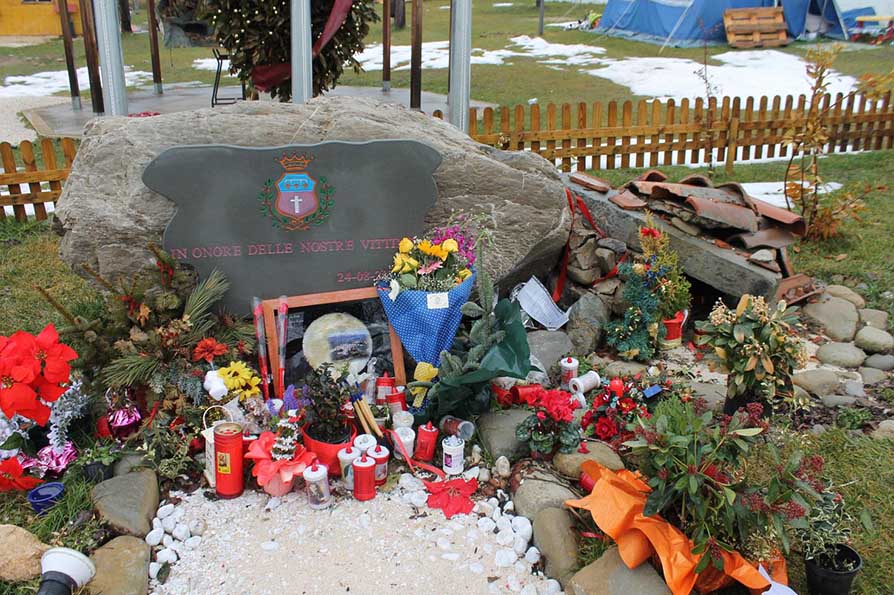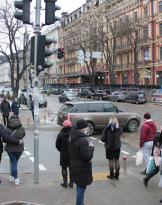Amatrice was one of the most beautiful villages in Italy. At 3.36 am on 24 August an earthquake measuring 6.0 on the Richter scale razed the entire country to the ground. Disturbing words that weigh heavily on hearing them, unable to prepare myself for what I would see. That magnitude value is synonymous with disaster. The sequence of tremors never stopped in the following months. The seismic swarm has shook all of Central Italy since last summer.
THEamateurs, as i called it Sabini, is the crossroads of four regions: Lazio, Umbria, Abruzzo and Marche. La Sabina, once inhabited by Sabini, is a historical-geographical region of Central Italy located between Lazio, Umbria and Abruzzo. The term is improperly used to connote the entire province of Rieti: including Amatrice.
"Operation Sabina" is the inter-force device of the Ministry of Defense, and in particular the Italian Army with which it intervened in the areas affected by the earthquake, in coordination with the other State Administrations to deal with the emergency, at the request of the Presidency of the council - civil protection department.
Defense Minister Roberta Pinotti, praised the Italian soldiers calling them heirs of the "mud angels" of the Florence flood of '66. Italian soldiers, like all the Armed Forces of our country, because of the emergencies that must be faced from North to South, are actually increasingly integrated into our current society. The Italian Army is engaged in national operations that see him involved day after day in direct contact with the citizen. THE'Operation Sabina it requires the participation of men, vehicles and specific materials used on various fronts to help the population hit by the earthquake, restore traffic, guarantee technical support for damage assessments and any critical situations. And in emergency situations, as in natural calamities so serious, you need to know how to communicate before informing, without deforming the reality, or having the haste to trample the rubble where even our soldiers, after the earth has shaken, have dug by hands naked to find someone alive.
 I leave from L'Aquila around 7.20 am in the direction of Amatrice: it is 42 km. The roads to get there are winding and inaccessible. I reach the devastation of the earthquake to look closely at the work that the Italian soldiers of the 6th pioneer genius regiment of Rome are doing in Amatrice, one of the municipalities where the violence of the earthquake has spared nothing or anyone. It has known no limits other than those of human resistance. The situation is worse than I imagined during the journey: the first, bitter, impact is near the “Tre Occhi” bridge which is located just below the town of Amatrice. The danger of collapse is real, it is easily seen. The earthquake devastated these landscapes, an oasis of natural beauty in the center of the Gran Sasso and Monti della Laga Park.
I leave from L'Aquila around 7.20 am in the direction of Amatrice: it is 42 km. The roads to get there are winding and inaccessible. I reach the devastation of the earthquake to look closely at the work that the Italian soldiers of the 6th pioneer genius regiment of Rome are doing in Amatrice, one of the municipalities where the violence of the earthquake has spared nothing or anyone. It has known no limits other than those of human resistance. The situation is worse than I imagined during the journey: the first, bitter, impact is near the “Tre Occhi” bridge which is located just below the town of Amatrice. The danger of collapse is real, it is easily seen. The earthquake devastated these landscapes, an oasis of natural beauty in the center of the Gran Sasso and Monti della Laga Park.
After the police force checkpoint at the entrance to the village, it is difficult not to notice the Army's men and vehicles entering or leaving the construction sites. Parking in front of the "Padre Giovanni Minozzi" municipal park.
Meeting the Army officer, assigned to the Public Information, in front of the park entrance. The life of the Amatricians is concentrated within it. It is from here that begins my "journey" to Amatrice next to the men of the 6 ° genius pioneering regiment of the Army.
Entering the Park, the colors of the children's games, against the white background of the snow, are brighter. They are not enough to confuse the gray of the temporary structures from which the earthquake emergency is managed. On the left I immediately recognize the container of Mayor Sergio Pirozzi. On the front panel there is the plate with the words: "Time-reduced".
Earthquake victims, however, it is forever.
 The door is closed. The mayor will arrive later. The PI officer points out to me next to the entrance to the container, the nativity scene made by Lucio Capri in 2009. This nativity scene recalls the earthquake in L'Aquila. It was donated to the community of Amatrice as a sign of closeness, because the earthquake unfortunately unites the two cities. It wants to be a symbol of hope for the people of L'Aquila and Amatriciani who must encourage themselves to face everyday reality. The earthquake brings death and destruction. It does not, however, wear down memory or traditions. The gift is a symbol of rebirth and the hope of putting the country back on its feet.
The door is closed. The mayor will arrive later. The PI officer points out to me next to the entrance to the container, the nativity scene made by Lucio Capri in 2009. This nativity scene recalls the earthquake in L'Aquila. It was donated to the community of Amatrice as a sign of closeness, because the earthquake unfortunately unites the two cities. It wants to be a symbol of hope for the people of L'Aquila and Amatriciani who must encourage themselves to face everyday reality. The earthquake brings death and destruction. It does not, however, wear down memory or traditions. The gift is a symbol of rebirth and the hope of putting the country back on its feet.
Just the time to turn around and my look is on what remains of the building of the Liceo Scientifico, almost completely destroyed. I stay to watch him for a while. The officer notices my momentary disturbance. We move towards the COC (Municipal Operative Center) the beating heart of the work coordination of all rescuers and post-earthquake management personnel on site.
The tensile structure was offered by the municipality of Milan and was transported from the mobile column of the civil protection of the city of Milan with the necessary materials for installation and generators. Two hundred square meters, equipped with a diesel heating that makes it completely independent. Inside, 20 stations have been installed with telephone and internet connection: from here the work of Italian Army, Fire Brigade and Civil Defense is coordinated.
 We leave the COC. We follow a small path inside the municipal park Minozzi which leads us to the plaque in honor of the victims of the earthquake that hit the municipal area last August. It was the Army soldiers who prepared the huge rock on which the tombstone was placed in the center of the area (photo at the bottom): it was taken from the Tronto river that springs from the Monti della Laga in the municipality of Amatrice, to cross the Marche and Abruzzo, also affected by the earthquake. Near the tombstone, the military placed some rubble, including pieces of a collapsed roof, to remind the Amatricians that the earthquake presented an impressive human account. This monument in memory of the missing fellow citizens is inside the playground: it is the most appropriate place to bring a flower or an object in memory of a loved one. The tombstone in the park is a symbol first of all, for young people. They must believe that Amatrice will rebuild itself: that boulder of the Tronto river indicates how much the Amatricians are linked to their territory.
We leave the COC. We follow a small path inside the municipal park Minozzi which leads us to the plaque in honor of the victims of the earthquake that hit the municipal area last August. It was the Army soldiers who prepared the huge rock on which the tombstone was placed in the center of the area (photo at the bottom): it was taken from the Tronto river that springs from the Monti della Laga in the municipality of Amatrice, to cross the Marche and Abruzzo, also affected by the earthquake. Near the tombstone, the military placed some rubble, including pieces of a collapsed roof, to remind the Amatricians that the earthquake presented an impressive human account. This monument in memory of the missing fellow citizens is inside the playground: it is the most appropriate place to bring a flower or an object in memory of a loved one. The tombstone in the park is a symbol first of all, for young people. They must believe that Amatrice will rebuild itself: that boulder of the Tronto river indicates how much the Amatricians are linked to their territory.
The Armed Forces have kept their promise to donate the Tricolor to the mayor of Amatrice who had expressed this desire to give institutions to the center that now represents the government building. And here the first flag-raising ceremony was carried out immediately after the earthquake.
 Getting to Amatrice is not easy and I'm not referring to the journey or the means employed, as far as the emotions I feel in looking closely at what I have seen for some time with the eyes of others. It is not easy because looking around you can not be serene. In the eyes of the amatricians I met there are many stories to tell. The earthquake is no longer there, but in every crossed life it seemed more alive than ever.
Getting to Amatrice is not easy and I'm not referring to the journey or the means employed, as far as the emotions I feel in looking closely at what I have seen for some time with the eyes of others. It is not easy because looking around you can not be serene. In the eyes of the amatricians I met there are many stories to tell. The earthquake is no longer there, but in every crossed life it seemed more alive than ever.
My trip to Amatrice continues next to the soldiers of the 6 regiment, engaged in the Operation Sabina, which is coordinated by Operation "Safe Roads": other soldiers carry out anti-looting security activities, manning the gates of the red areas of Amatrice.
The Italian Army thanks to the "Dual Use" ability of many of its departments, guarantees a multi-faceted employment by providing men, vehicles and equipment able to intervene, operate and be used throughout the country in favor and support of the population, in a case of public utility, as evidenced by the presence of the military in Amatrice for the earthquake emergency. Their presence reassures, their continuous work and commitments are massive.
The ability to intervene demonstrates the effectiveness of an organization that manages to face the most varied situations with speed, practical sense and high operational capacity. All in constant safety and protection for citizens and the Amatrician territory. And it is precisely with the eyes of these soldiers who have been here since that August 24th, that I will talk about the daily work in which they are engaged to restore a face to this gutted country and instill hope in its people.
 (photo of the author)
(photo of the author)












